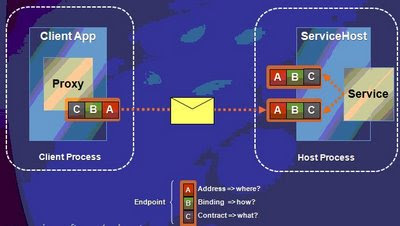WCF - Interview Questions Part 3
Jun 30, 2009
0
comments
- Explain transactions in WCF.
Transactions in WCF allow several components to concurrently participate in an operation. Transactions are a group of operations that are atomic, consistent, isolated and durable. WCF has features that allow distributed transactions. Application config file can be used for setting transaction timeouts. - What are different isolation levels provided in WCF?
The different isolation levels:
1. READ UNCOMMITTED: - An uncommitted transaction can be read. This transaction can be rolled back later.
2. READ COMMITTED :- Will not read data of a transaction that has not been committed yet
3. REPEATABLE READ: - Locks placed on all data and another transaction cannot read.
4. SERIALIZABLE:- Does not allow other transactions to insert or update data until the transaction is complete. - Explain transactions in WCF.
Transactions in WCF allow several components to concurrently participate in an operation. Transactions are a group of operations that are atomic, consistent, isolated and durable. WCF has features that allow distributed transactions. Application config file can be used for setting transaction timeouts. - How do I serialize entities using WCF?
LINQ to SQL supports serialization as XML via WCF by generating WCF serialization attributes and special serialization specific logic during code-generation. You can turn on this feature in the designer by setting serialization mode to ‘Unidirectional’. Note this is not a general solution for serialization as unidirectional mode may be insufficient for many use cases. - What is End point ?
Every service must have Address that defines where the service resides, Contract that defines what the service does and a Binding that defines how to communicate with the service. In WCF the relationship between Address, Contract and Binding is called Endpoint.
The Endpoint is the fusion of Address, Contract and Binding.
Happy Interview!!!
Share


